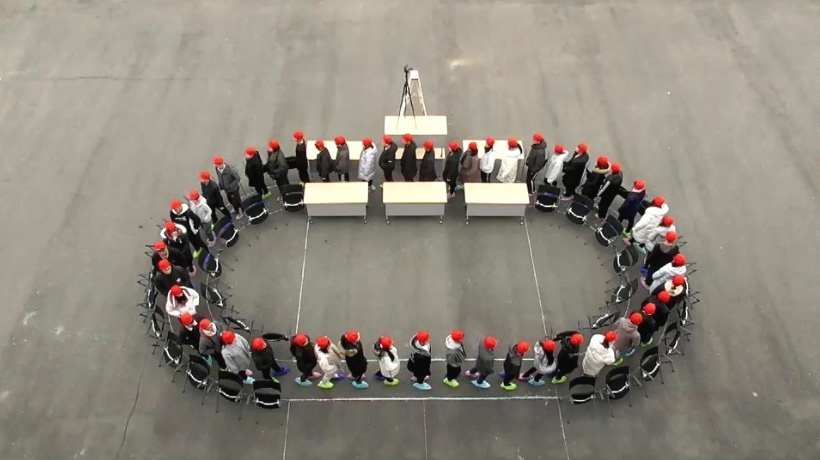Study suggests safety is why crowds synch footsteps

Research co-led by academics at City University of Hong Kong (CityU) has discovered that the phenomenon of human self-organisation known as synchronisation forms spontaneously when the safety distance between pedestrians seems insufficient.
These insights into the collective motion behaviour of humans may help prevent the synchronisation-induced wobbling effect that can affect bridges, for example.
Three CityU scholars took part in this research: Professor Richard Yuen Kwok-kit, Chair Professor, Department of Architecture and Civil Engineering (ACE) and Chief-of-Staff; Dr Eric Lee Wai-ming, Associate Professor; and Dr Shi Meng, former Research Assistant, both from ACE.
“Synchronisation enhances coordination and cooperation among members of a crowd and is believed to increase movement efficiency,” said Dr Ma Yi, a former PhD student under Professor Yuen and the first author of a paper recently published in the prestigious journal Nature Human Behaviour under the title “Spontaneous synchronisation of motion in pedestrian crowds of different densities”.
“In engineering, crowd synchronisation is often linked with the structural stability of buildings and has been identified as a major cause of lateral vibration in some footbridges,” Dr Ma added.

In a single-file crowd motion experiment with 70 participants, the research team tried to find out the level of crowd density most likely to induce synchronisation, the underlying formation mechanism of synchronisation, and the functional benefit of synchronisation for the collective motion of humans.
Unlike previous experiments that tracked only a single foot or the motion of the head, this team tracked simultaneously the motion of the two feet and the motion of the head. This enabled researchers to collect extensive additional research data, for example, the span of the two feet of each pedestrian and the distance between the front foot of a follower and the rear foot of a predecessor.
The research reveals that the closer the headway is to 1.15 metres, the smaller the safety distance will be for pedestrians, and thus the larger the potential collision risk. The follower is more likely to synchronise his/her steps with those of the predecessor at this level of pedestrian density.
This is why synchronisation increases the movement efficiency of crowds. In addition, synchronisation is most likely to be triggered at the same density at which the flow rate of pedestrians reaches a maximum value.
“Synchronisation is established in response to an insufficient safety distance between pedestrians, which enables pedestrians to realise efficient collective stepping motion without the occurrence of inter-person collisions,” said Dr Lee, the second author of the paper.
An understanding of crowd synchronisation is also useful for synchronisation research involving many other kinds of crowds, such as animal groups, self-propelled particles and multi-agent systems.
